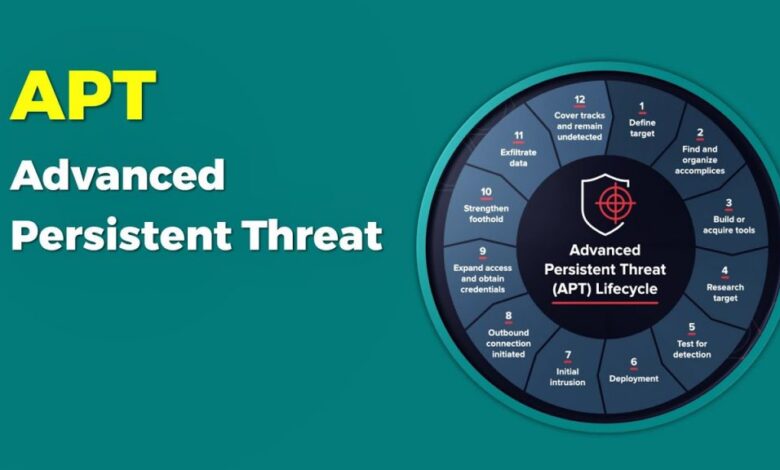
Advanced Persistent Threats (APTs) represent one of the most sophisticated and dangerous categories of cyber attacks facing organizations today. These stealthy, long-term campaigns are designed to remain undetected while attackers establish footholds, steal sensitive data, and maintain persistent access to targeted networks. Traditional security measures often fall short against APTs, making specialized threat intelligence tools essential for modern cybersecurity defense strategies.
The complexity of APT attacks demands equally sophisticated detection and analysis capabilities. Organizations need tools that can identify subtle indicators of compromise, analyze malware behavior in controlled environments, and provide actionable intelligence to security teams. This is where advanced threat intelligence platforms become indispensable.
A Guide to Advanced Persistent Threats
APTs differ significantly from opportunistic cyberattacks. These campaigns typically involve state-sponsored actors or well-funded criminal organizations with specific targets and long-term objectives. APT groups invest considerable resources in reconnaissance, custom malware development, and maintaining persistent access to compromised systems.
The multi-stage nature of APT attacks makes them particularly challenging to detect. Initial compromise often occurs through spear-phishing emails, watering hole attacks, or supply chain compromises. Once inside a network, attackers move laterally, escalate privileges, and establish multiple persistence mechanisms to ensure continued access even if some components are discovered.
The average dwell time for APTs – the period between initial compromise and detection – can extend for months or even years. During this time, attackers continuously adapt their tactics, techniques, and procedures (TTPs) to evade detection while achieving their objectives.
The Critical Role of Threat Intelligence Tools
Effective APT detection requires more than traditional signature-based security solutions. Organizations need comprehensive threat intelligence tools that combine multiple detection methodologies, including behavioral analysis, machine learning algorithms, and automated malware analysis.
Modern threat intelligence platforms provide security teams with the visibility and analytical capabilities necessary to identify APT activities. These tools correlate data from multiple sources, analyze suspicious files and network traffic, and provide detailed reports on potential threats.
Dynamic malware analysis has emerged as a particularly crucial component of threat intelligence. By executing suspicious files in controlled sandbox environments, security teams can observe malware behavior without risking their production systems. This approach reveals the true nature of sophisticated threats that might otherwise evade static analysis techniques.
Key Features of Effective APT Detection Tools
The most effective threat intelligence tools for APT detection incorporate several essential features that work together to provide comprehensive protection.
Behavioral Analysis Capabilities
Advanced behavioral analysis goes beyond simple signature matching to identify suspicious activities and attack patterns. These systems monitor process execution, network communications, file system modifications, and registry changes to build comprehensive pictures of potential threats.
Multi-Platform Support
APT groups target diverse operating systems and platforms. Effective threat intelligence tools must support analysis across Windows, Linux, macOS, and mobile platforms to provide complete coverage of potential attack vectors.
Integration with Existing Security Infrastructure
The best threat intelligence platforms seamlessly integrate with existing security information and event management (SIEM) systems, endpoint detection and response (EDR) tools, and other security technologies. This integration enables automated threat response and reduces the burden on security teams.
Detailed Reporting and Attribution
Comprehensive reporting capabilities help security teams understand attack methodologies, identify indicators of compromise, and potentially attribute attacks to specific threat groups. This intelligence is crucial for developing effective countermeasures and improving overall security posture.
VMRay: Advanced Dynamic Analysis for APT Detection
VMRay represents a leading example of how modern threat intelligence tools address the challenges of APT detection. This platform utilizes advanced dynamic analysis techniques to provide deep insights into malware behavior and potential threats.
The VMRay platform employs unique hypervisor-based analysis that provides unprecedented visibility into malware execution. Unlike traditional sandbox solutions that can be detected and evaded by sophisticated malware, VMRay’s approach operates at a level that is extremely difficult for malware to detect or manipulate.
One of VMRay’s key strengths lies in its ability to analyze even the most evasive malware samples. The platform can handle advanced evasion techniques commonly employed by APT groups, including anti-analysis measures, environmental checks, and time-based delays.
The comprehensive reporting capabilities of VMRay provide security teams with detailed insights into malware behavior, network communications, and potential indicators of compromise. These reports enable rapid threat response and help organizations understand the full scope of potential APT activities.
Implementing Threat Intelligence for APT Defense
Successful APT detection requires more than deploying advanced tools – it demands a comprehensive approach that combines technology, processes, and skilled personnel.
Establishing Detection Baselines
Organizations must first establish baselines of normal network and system behavior. This understanding enables more accurate identification of anomalous activities that might indicate APT presence. Threat intelligence tools like VMRay can help establish these baselines by analyzing legitimate software and network traffic patterns.
Continuous Monitoring and Analysis
APT detection requires continuous vigilance. Security teams must implement 24/7 monitoring capabilities and establish processes for rapid analysis of potential threats. Automated analysis tools can process large volumes of suspicious files and network traffic, but human expertise remains essential for interpreting results and making critical decisions.
Threat Hunting Initiatives
Proactive threat hunting goes beyond automated detection to actively search for indicators of APT presence. Security teams use threat intelligence tools to investigate suspicious activities, analyze potential indicators of compromise, and identify previously undetected threats.
Challenges in APT Detection and Mitigation
Despite advances in threat intelligence tools, organizations face ongoing challenges in APT detection and response.
Resource Constraints
Many organizations struggle with limited security resources, making it difficult to implement comprehensive APT detection capabilities. The complexity of modern threat intelligence tools often requires specialized expertise that may not be readily available.
False Positive Management
Advanced detection capabilities can generate significant numbers of alerts, potentially overwhelming security teams. Organizations must develop effective processes for prioritizing and investigating potential threats while minimizing false positives.
Evolving Attack Techniques
APT groups continuously evolve their tactics and techniques to evade detection. Threat intelligence tools must adapt quickly to address new attack vectors and evasion techniques. Platforms like VMRay regularly update their analysis capabilities to address emerging threats and maintain effectiveness against sophisticated adversaries.
Building Comprehensive APT Defense Strategies
Effective APT defense requires integrating threat intelligence tools into broader security strategies that address the entire attack lifecycle.
Prevention and Early Detection
Organizations should implement multiple layers of defense, including email security, endpoint protection, and network monitoring. Threat intelligence tools provide crucial capabilities for analyzing potential threats before they can establish persistence in target environments.
Incident Response Integration
When APT activities are detected, organizations need rapid response capabilities. Threat intelligence platforms should integrate with incident response workflows to provide detailed analysis results and support containment efforts.
Continuous Improvement
APT defense strategies must evolve continuously based on lessons learned from security incidents and emerging threat intelligence. Organizations should regularly evaluate their detection capabilities and update their tools and processes accordingly.
Conclusion
Advanced Persistent Threats represent one of the most significant challenges in modern cybersecurity. These sophisticated attacks require equally advanced detection and analysis capabilities that go far beyond traditional security measures.
Threat intelligence tools have become essential components of comprehensive APT defense strategies. Platforms that combine advanced behavioral analysis, dynamic malware execution, and comprehensive reporting capabilities provide security teams with the visibility and insights necessary to detect and respond to APT activities.
The investment in advanced threat intelligence tools pays dividends through improved detection capabilities, reduced dwell times, and more effective incident response. As APT groups continue to evolve their tactics, organizations must ensure their defense strategies evolve accordingly, leveraging the latest advances in threat intelligence technology to protect their critical assets and data.





